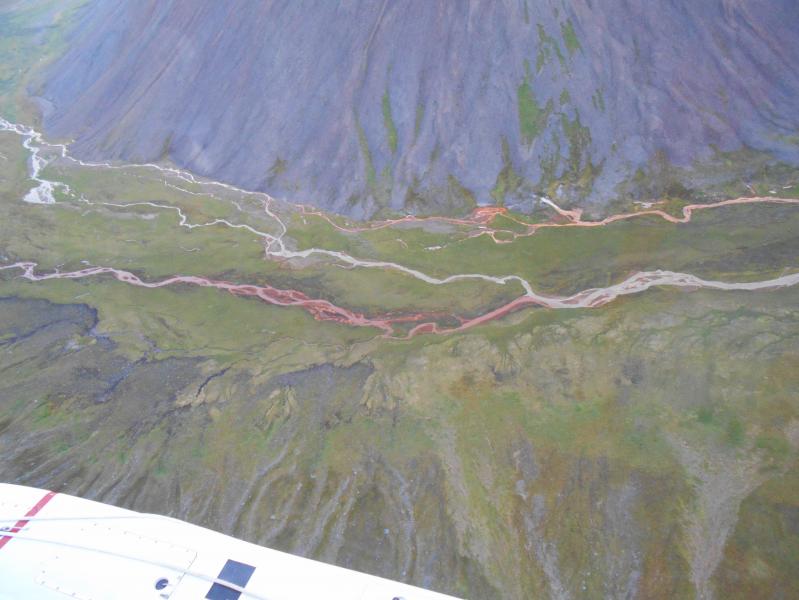
Overflight of Ugashik Creek area, July 15, 2015. Photos courtesy of Kevin Payne, US Fish and Wildlife Service.
Volcano(es): Chiginagak Ugashik-Peulik
Photographer: Payne, Kevin
URL: avo.alaska.edu/image/view/79791
Credit: Image courtesy of the photographer and the U.S. Fish and Wildlife Service.
Use Restriction: Please cite the photographer and the U.S. Fish and Wildlife Service when using this image.
Full Resolution.
Ugashik-Peulik 2015
From Dixon and others, 2017: "On March 26 a ML=4.1 earthquake and aftershocks occurred close to the west shore of Becharof Lake in the same area as the 1998 Becharof swarm (McGimsey and others, 1999), 35 km (19 mi) west-northwest of Ukinrek Maars and 47 km (25 mi) west-northwest of Peulik. The earthquake series was short-lived as 17 earthquakes, 10 greater than ML=2.0, occurred within a 10-hour period, including the ML=4.1 and a ML=3.0 earthquake both of which occurred within the first 2 hours. These earthquakes formed a narrow east-west cluster 19 km (10 mi) in length at a depth of 7-9 km (3.7-4.9 mi). Nine additional earthquakes occurred in the same location in 2015-two in early March, five in mid-April, and two in late summer. The largest of these was a ML=3.2 on April 21, 2015.
"On July 15, an Alaska Department of Fish and Game (ADF&G) biologist reported that the water in Hot Springs Creek, flowing from Ugashik caldera into Ugashik Creek was 'frothy and orange.' The biologist also reported that salmon were not entering the stream where Ugashik Creek flows into Ugashik Lake as in past years (fig. 9 [original text]). Two days after the report, two water samples were collected from Hot Springs Creek at locations shown in figure 9 [original text]. Analysis (table7 [original text]) showed a pH (5.76 and 5.52) similar to previous water samples collected in June 2004 (pH=5.71) by Evans and other (2009) in a similar location. An aerial survey of the creek from the caldera to Upper Ugashik Lake detected no orange discoloration of the stream beyond the caldera. Outside the caldera, the stream was not running clear, but appeared heavily laden with sediment, rather than tinted orange as with waters inside the caldera. No unusual activity was observed and the discoloration likely was caused by a period of high runoff that intermixed the thermal waters with the clearer water in the stream causing a temporary flow of anomalously colored water
that delayed the reported movement of salmon upstream by ADF&G biologists. No volcanic unrest was apparent."